Explore offbeat Goa — hidden beaches, bird sanctuaries, heritage villages & local flavors. Discover the real Goa beyond beaches.
When most people think of Goa, images of sun-soaked beaches, neon parties, and crowded shacks immediately come to mind. And while the popular spots like Baga, Calangute, and Palolem definitely have their charm, there’s a different Goa waiting for those willing to wander off the beaten path.
Travel trends are leaning toward slower, immersive experiences, and Goa’s lesser-known corners are ideal for travelers looking to escape the crowds, soak in nature, and uncover authentic local experiences.
Here’s a curated list of 11 offbeat spots and experiences in Goa that will inspire you to discover the real, authentic side of the state.
1. Chorao Island
Once known as “Ilhas Dos Fidalgos” or The Island of the Noblemen by the Portuguese, is one of Goa’s hidden treasures. Captured early in their 451-year rule, this serene island is now a haven for nature lovers, history buffs, and travelers seeking tranquility. It’s especially famous for migratory birds, with the Dr. Salim Ali Bird Sanctuary forming the crown jewel of the island.
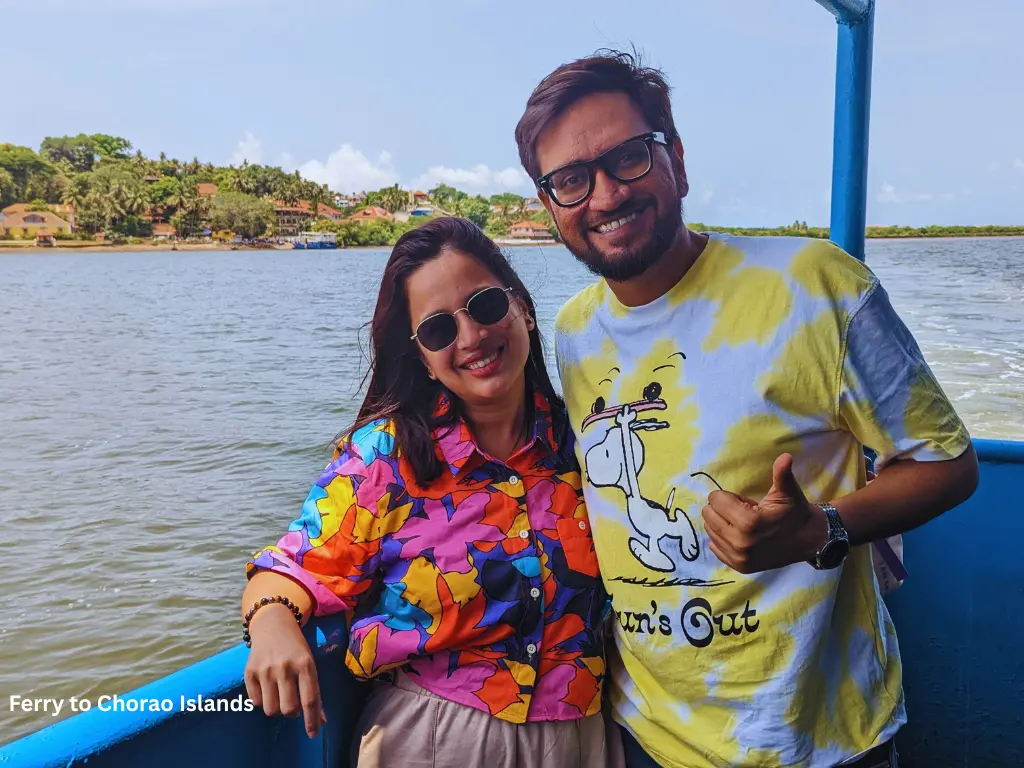
🚤 Getting There
- Ferry from Ribandar Jetty (Panaji): Approximately 20 minutes across the Mandovi River.
- Pedestrians & two-wheelers: Minimal Pricing (Prices can vary)
- Four-wheelers: ₹20 per vehicle (Prices can vary)
- Ferry Schedule: Runs frequently throughout the day, early morning to late evening
- Best Way to Explore: On rented scooters or cars — ideal for discovering hidden temples, scenic spots, and local life.
It is difficult to explore on foot as places are far off from each other.
🌿 Nature & Birdwatching
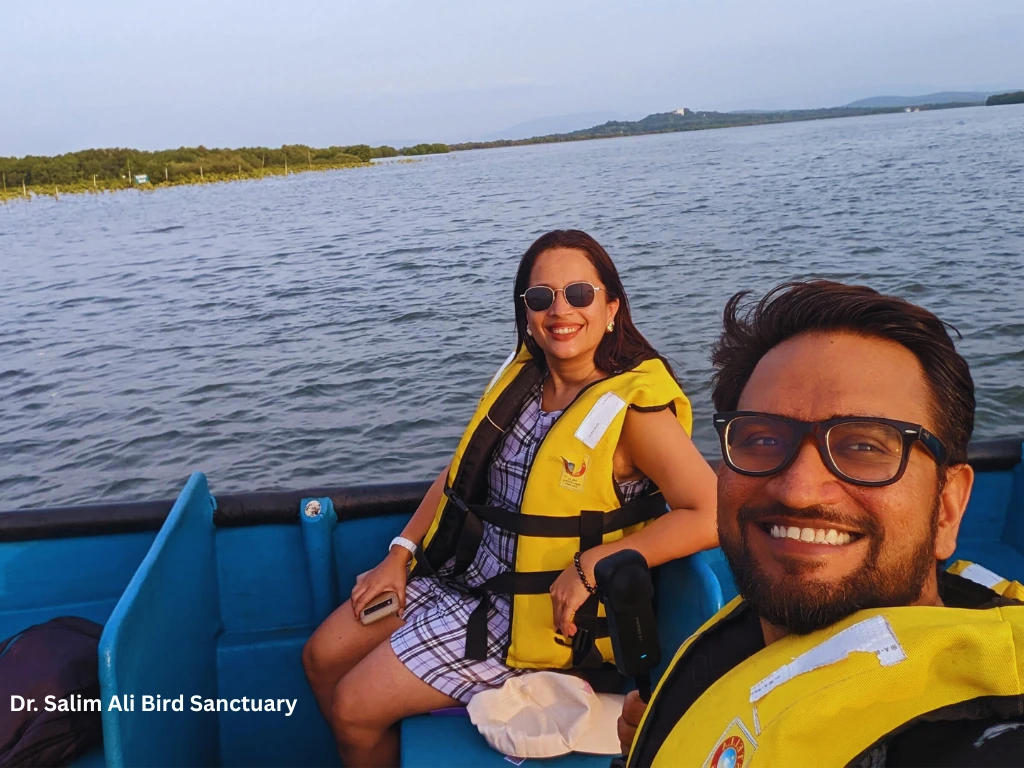
The Dr. Salim Ali Bird Sanctuary, spanning 178 hectares, is a paradise for bird enthusiasts. Walking trails wind through mangroves, mudflats, and estuaries. Expect to spot kingfishers, egrets, and a variety of migratory birds.
Best Time and Best Way: Early morning is ideal for birdwatching. A boat ride into the mangroves reveals the island’s rich ecosystem, while quiet corners offer stunning photography opportunities.
⛪ Temples & Heritage
Chorao Island’s cultural heritage is just as enchanting as its nature:
Shri Devaki Krishna Temple: A unique temple dedicated to Lord Krishna’s Mother with traditional architecture, hosting festivals that bring the local community together.
Hidden Chapels & Churches: Scattered across the island, remnants of Portuguese influence include small chapels and old churches. St. Bartholomew’s Church is one of the notable churches there.
Lost Seminary Trek — an offbeat adventure where you can explore forgotten heritage and enjoy panoramic views of the river and mangroves.
While exploring Chorao Island, don’t miss the chance to sip local drinks like feni or urak at family-run distilleries or small local bars. These traditional Goan spirits give you a taste of the island’s culture, and each distillery has its own story behind the production. Urak, a fresher and slightly stronger version of feni, is often enjoyed straight or in simple cocktails, offering an authentic Goan experience.
Chorao Island balances ecology, history, and adventure, making it perfect for travelers looking for more than the usual Goa itinerary.
🧭 Travel Tips
- Best Time to Visit: October to March for pleasant weather
- What to Carry: Comfortable shoes, sunscreen, water, binoculars for birdwatching
- Local Etiquette: Respect temples, churches, and natural habitats
Take a ferry, wander its trails, and discover why this “Island of the Noblemen” is one of Goa’s most underrated gems. We did a half day trip to Chorao Island with Soul Travelling (https://www.soultravelling.in/) . They have compiled great experiences making it a wonderful trip.
2. Chorla Ghat – Goa’s Lush Highland Escape
Away from Goa’s bustling beaches lies Chorla Ghat, a serene retreat in the Western Ghats at the tri-junction of Goa, Maharashtra, and Karnataka. Known for its lush greenery, cascading waterfalls, and rich biodiversity, Chorla Ghat is a paradise for trekkers, nature photographers, and travelers seeking peace.
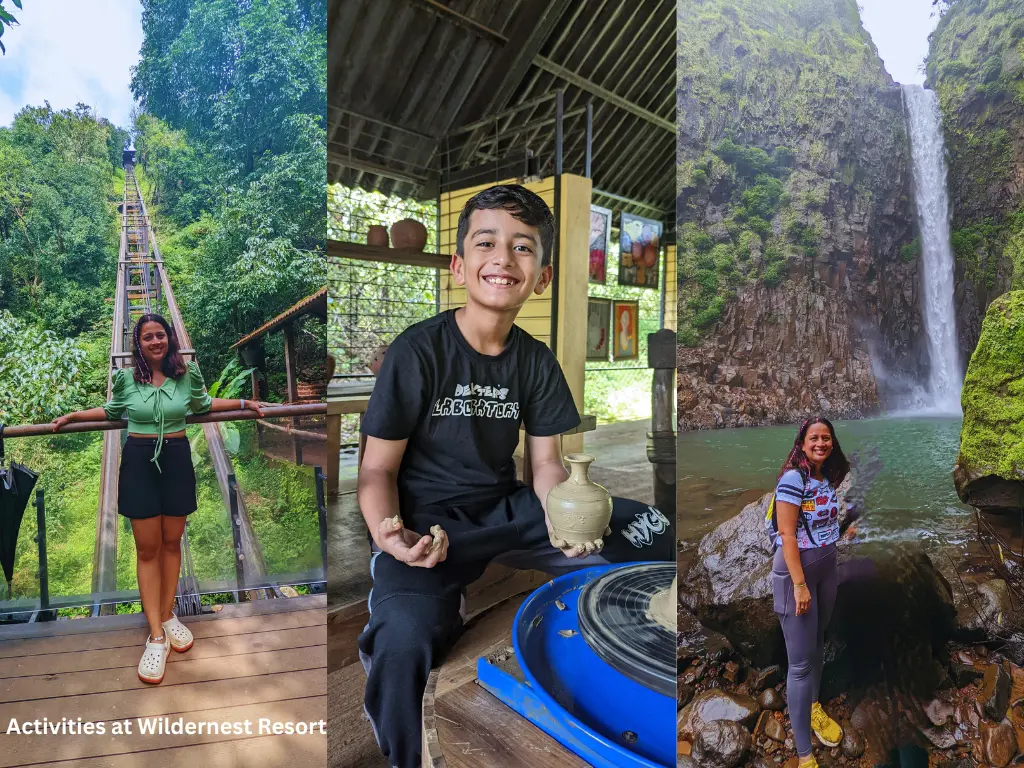
🌿 Nature & Adventure
Chorla Ghat is part of the Mhadei Wildlife Sanctuary, offering a haven for rare flora and fauna. The region is dotted with waterfalls, misty hills, and trekking trails that appeal to adventure seekers and nature lovers alike. Popular treks include:
- Waterfall Trails – Explore hidden waterfalls through forested paths.
- Birdwatching – Spot exotic birds and enjoy the sounds of the forest.
Photography Spots – Misty hills and panoramic views across three states.
🏨 Wildernest Nature Resort – Your Stay in the Hills
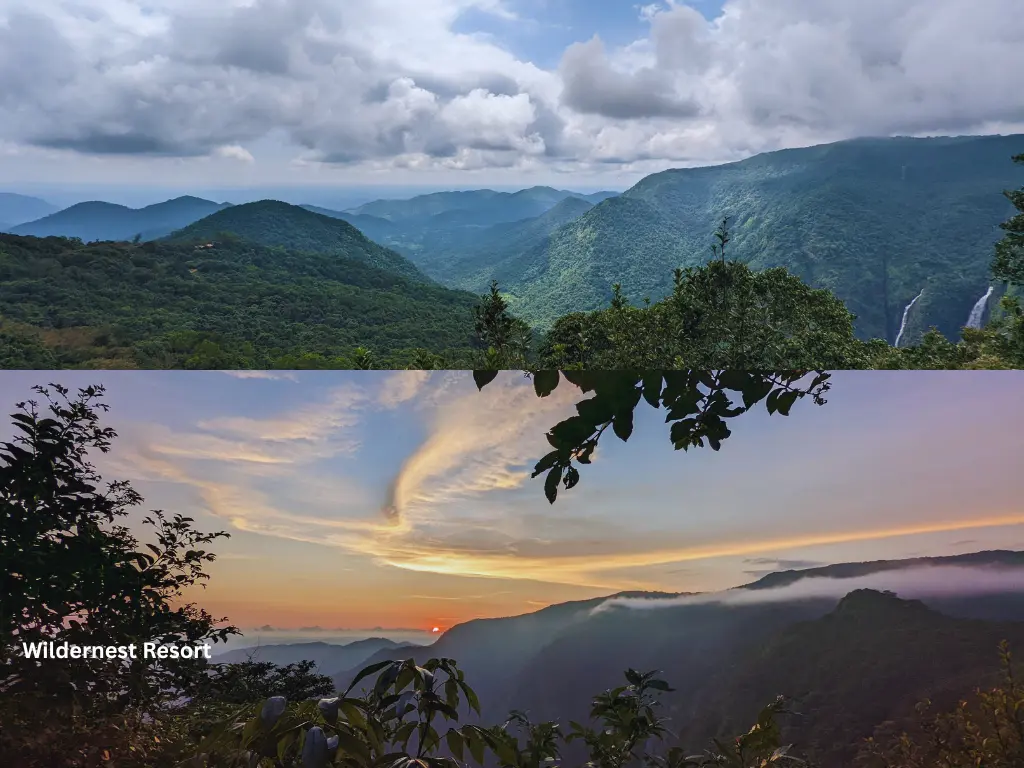
Nestled in the heart of Chorla Ghat, Wildernest Nature Resort offers a perfect blend of comfort and nature immersion. The resort is designed to make you feel one with the forest while enjoying modern amenities.
Highlights:
- Accommodation: Comfortable cottages with stunning views of the valley and hills.
- Activities: Private waterfall treks, guided nature walks, village cultural experiences, pottery making, and village organic food workshops.
- Facilities: Infinity pool, outdoor seating, and serene spots for relaxation.
Stay Details:
- Prices vary depending on the season, ranging roughly ₹8,000–₹12,000 per night, including select activities.
- Website: https://www.wildernest-goa.com/
- Booking in advance is recommended, especially during peak season (October–March).
📆 Best Time to Visit
- October to March: Pleasant weather, clear skies, ideal for treks and outdoor activities.
- Monsoon (June–September): Waterfalls are at their most spectacular, but trails can be slippery — best for experienced trekkers.
🧭 Travel Tips
- What to Carry: Trekking shoes, comfortable clothing, rain gear (if visiting during monsoon), and a camera.
- Guides: Hiring a local guide is recommended for waterfall treks and forest trails.
- Safety: Watch for slippery rocks near waterfalls and follow the resort’s safety instructions.
Chorla Ghat is perfect for travelers who want to escape the crowded beaches and immerse themselves in nature, adventure, and serene landscapes. With Wildernest Resort as your base, you can explore the hidden gems of the Western Ghats while enjoying comfort and curated experiences.
3. Cavatina by Avinash Martins – Creative Goan Dining
Hidden in Benaulim, Cavatina is not your typical Goan restaurant. Chef Avinash Martins, who trained internationally but returned to his roots, serves food that blends Goan ingredients with global techniques — without losing authenticity. Think of it as Goan tradition reimagined on a plate.
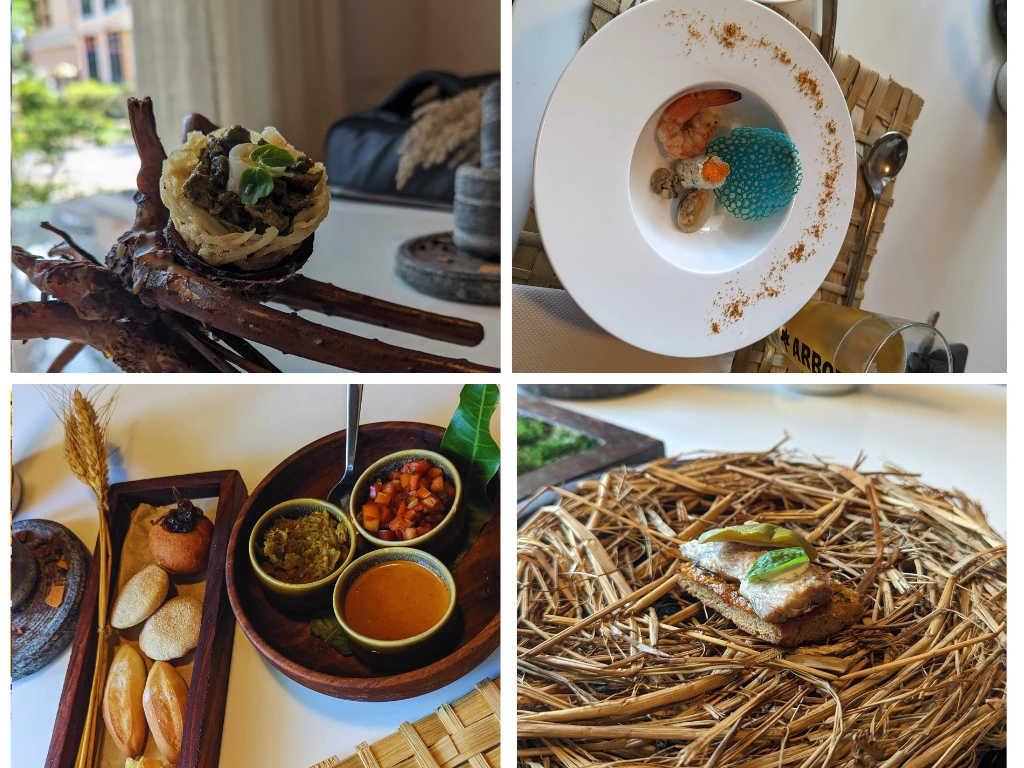
The menu changes seasonally and highlights local, foraged, and organic produce. A single meal here can range from reinvented Goan classics like choris-stuffed bao or seafood risotto with a Konkani twist, to hyper-local tasting menus that tell stories of Goa’s villages and forests. What makes it even more special is the intimate, almost homely vibe of the restaurant — small, quiet, and personal, far from the bustle of beach shacks.
For food lovers, dining at Cavatina feels like sitting at the intersection of Goa’s past and future — tradition meeting innovation, on a single plate.
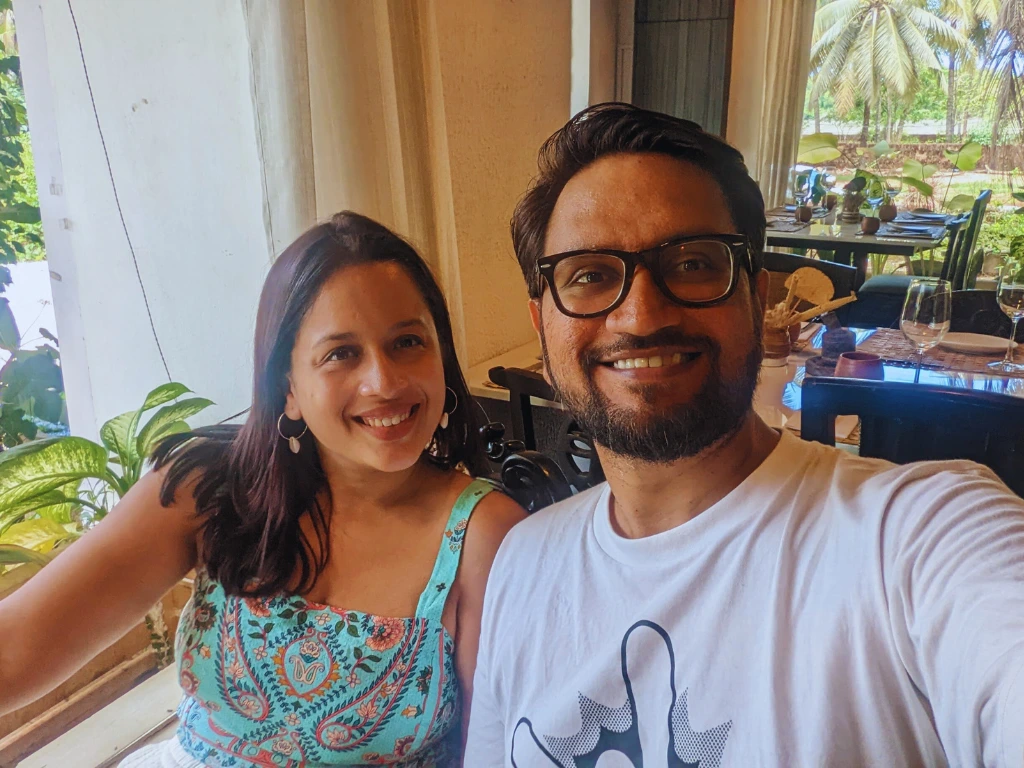
Location: Cavatina, Benaulim, South Goa
Tip: Advance reservations are recommended, as the space is intimate and tends to fill quickly.
4. Roll, Bake, and Taste Goa

Most visitors come to Goa for beaches, sun, and seafood. But what if you could take a piece of Goan life home in your hands? In the village of Majorda, you can do just that — knead, shape, and bake Poi, Goa’s traditional bread, in a rustic wood-fired oven, following a practice that has been passed down for generations.
Here, baking isn’t just about bread; it’s a window into the history, flavors, and daily life of Goa. You’ll discover the difference between Poi, Katre Pao, and Undo, and why each has a special place in local kitchens. Some are best savored with spicy curries, others with a hot cup of chai. Don’t be shy to ask the baker for their personal favorite — it might just become yours too.
🥖 Get Your Hands Dirty From kneading the dough to sliding it into the crackling oven, every step is interactive and sensory. The smell of firewood, the warmth of freshly baked bread, and the textures under your fingers make this more than a cooking lesson — it’s a memory.
⏰ Practical Details
- Duration: About 2.5 hours
- Location: Majorda, Goa
- Activity carried out by : www.soultravelling.com (not sponsored; we loved this experience and so highly recommending it)
Note: Transport is needed between stops; it’s best to use the same vehicle for the full experience.
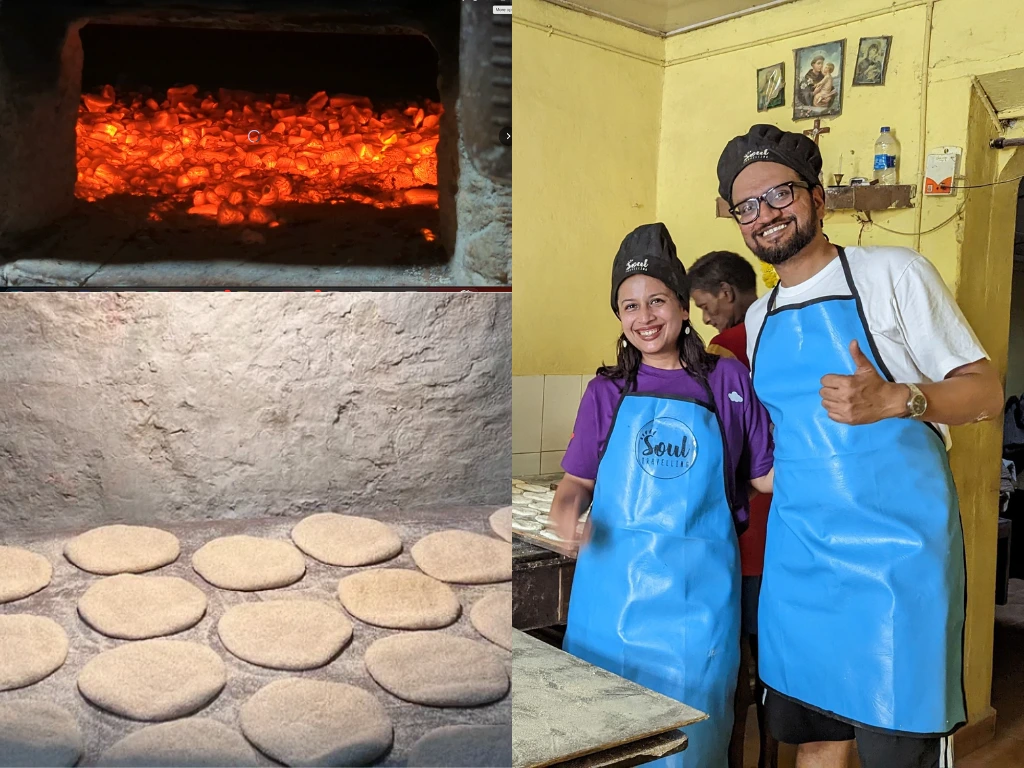
🌟 Why This Activity Stands Out
- Experience the ancient tradition of Goan bread-making firsthand.
- Learn the history of Pao in Goa and its journey into local kitchens.
- Visit Majorda Railway Station, a key location in the story of Goan baking.
- Make your own panini using the freshly baked bread, adding your personal twist.
This isn’t just about tasting bread. It’s about living a story, crafting a memory, and connecting with Goa in a way few travelers do. By the end, you’ll have more than a snack — you’ll have a story to share.
5. Cola Beach (South Goa)
Tucked away behind a short downhill trek through lush greenery, this hidden gem is far from the bustling tourist trail.
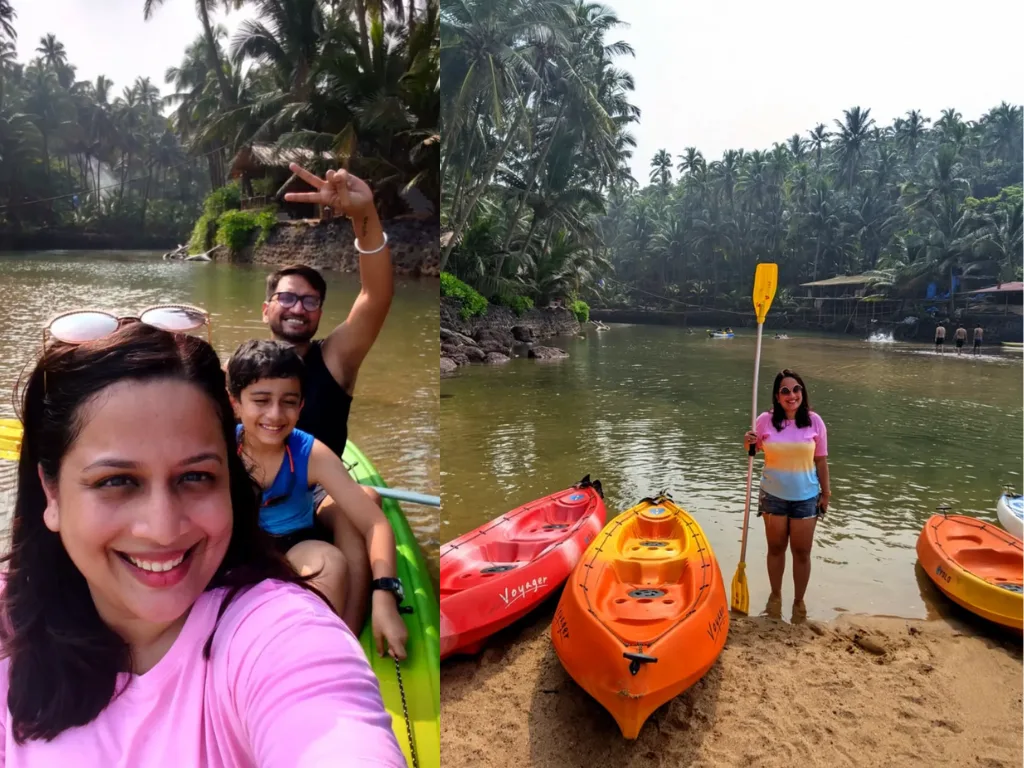
Why Visit Cola Beach?
Cola Beach is famous for its freshwater lagoon, which sits just adjacent to the sea. The lagoon is perfect for kayaking, paddleboarding, or simply floating and taking in the pristine surroundings. Unlike crowded beaches, here you’ll have plenty of space to breathe, read, or relax while listening to the waves and birds.
The trek down to the beach is easy to moderate, taking about 15–20 minutes from the parking area. Along the way, you pass small shacks and rustic huts where locals sometimes offer refreshments.
Activities
- Kayaking in the lagoon – enjoy calm waters and panoramic views.
- Photography – early morning or sunset offers magical light, perfect for Instagram-worthy shots.
- Beach relaxation – sunbathe or take a slow walk along the secluded shore.
Nearby Facilities
- Shacks & Refreshments: There are 2–3 shacks near the lagoon for drinks and snacks.
- Parking: Limited space at the top of the hill; better to arrive early.
How to Reach
- By Car: Cola Beach is about 45 km from Margao and 60 km from Panjim. GPS coordinates: 15.0693° N, 73.9602° E.
By Taxi or Scooter: Easily accessible from Agonda or Palolem.
*Ride your way here with a scooty, its most convenient.
Best Time to Visit
- October to March – perfect for sunny but comfortable beach weather.
- Monsoon (June–September) – the trek may be slippery, and the waterfall streams are more dramatic.
Pro Tips
- Carry water.
- Wear comfortable shoes for the trek.
- Sunrise or sunset is the ideal time for photos.
6. Make your own Goan Lunch
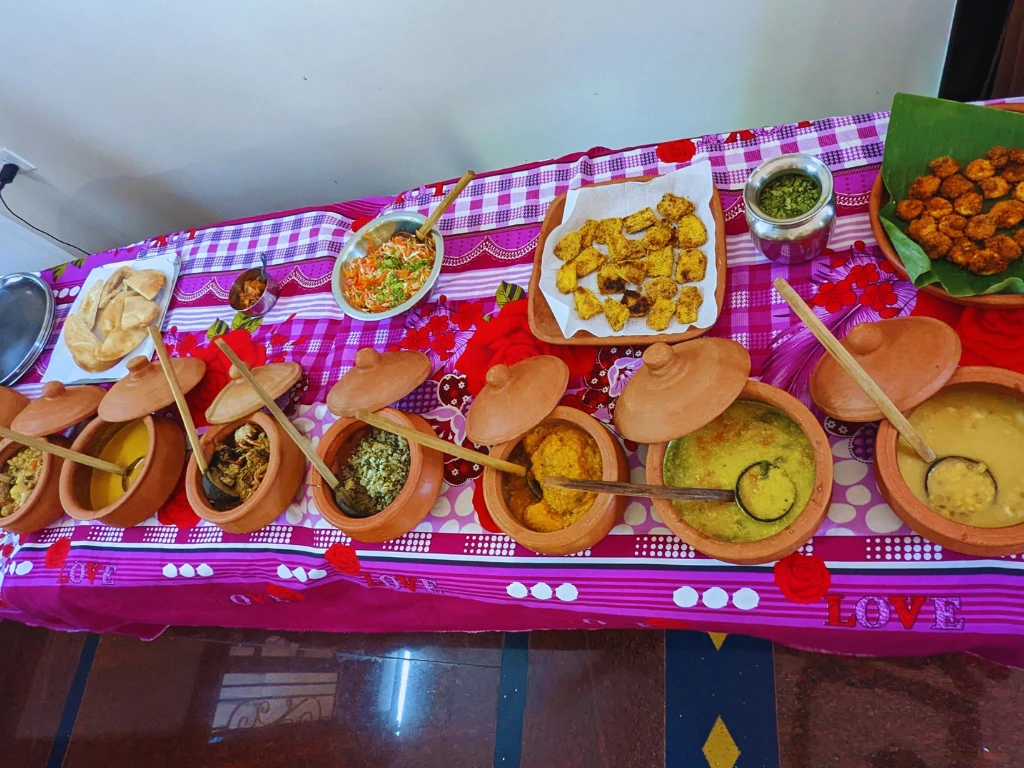
Step away from Goa’s beaches and discover the slower, more soulful side of Goan life on Chorao Island. Here, you don’t just eat — you make your own traditional Goan lunch in a real village home, surrounded by rice fields, cashew groves, and the rhythm of island life.
After a short ferry ride across the calm waters to Chorao, you’ll be guided through the village, learning about local ingredients, cooking techniques, and family traditions. Inside the kitchen, you’ll roll up your sleeves, chopping, stirring, and cooking alongside local hosts who have been perfecting these recipes for generations.
From preparing fresh seafood curries to traditional vegetarian dishes, every step is interactive and full of stories. The aroma of firewood cooking fills the air, the flavors are authentic, and the experience is deeply personal. By the end, you’ll sit down to enjoy your homemade meal, savoring every bite with a sense of pride and connection to Goan culture.
Activity carried out by : www.soultravelling.com (not sponsored; we loved this experience and so highly recommending it)
🌟 Why You Should Try It
- Hands-on Goan cooking experience in a real village home.
- Learn traditional recipes, ingredients, and techniques from locals.
- Walk through rice fields and cashew groves, soaking in the island vibe.
- Perfect for slow travelers, food lovers, and culture seekers.
Tip: Bring an appetite and a sense of curiosity — this isn’t just a meal, it’s a story you cook and eat
7. Secret Beaches: Fatrade & Uthorda
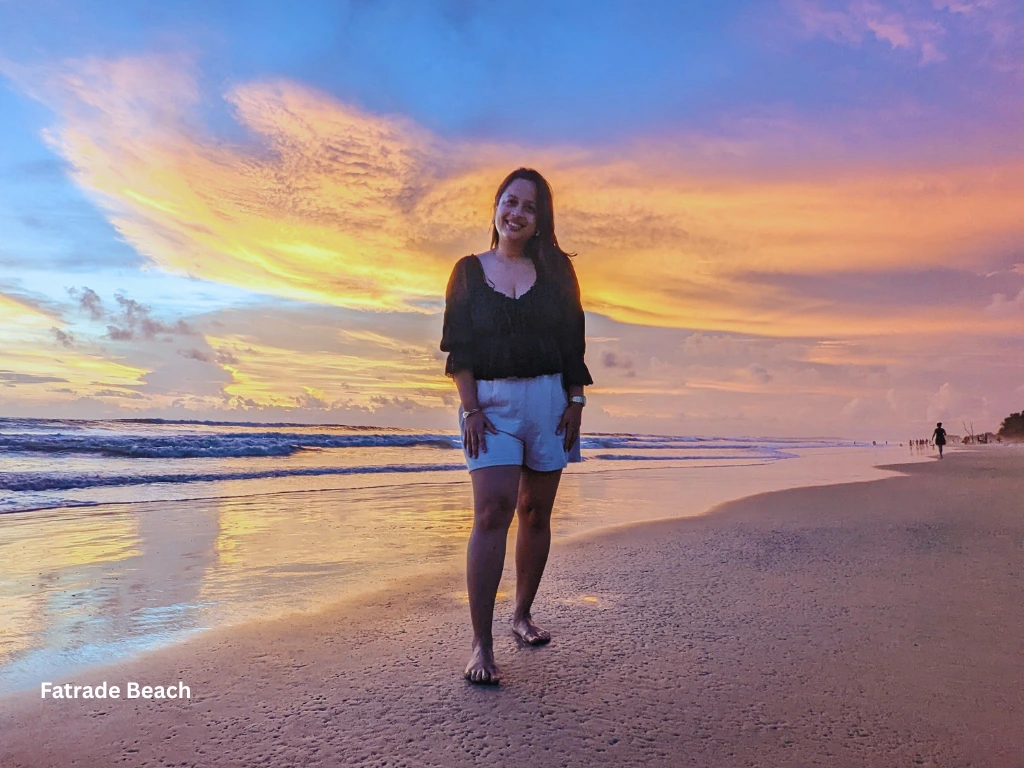
Fatrade and Uthorda beaches are tucked between North and South Goa, away from the usual chaos of Baga, Anjuna, or Palolem. While not completely deserted, these beaches feel peaceful and authentic, with small local shacks and a handful of resorts. Walking along these sands, you can truly hear the waves and enjoy Goa at a slower pace — a contrast to the crowded party hubs.
Fatrade Beach is a serene stretch of golden sand lined with palm trees and a few rustic shacks. Here, you can enjoy sunbathing, leisurely walks, or simply soaking in the sound of the waves. Meanwhile, Uthorda Beach, just a short drive away, offers calm, shallow waters ideal for swimming and long walks along the shore. Both beaches remain largely untouched, giving you a sense of privacy and authentic Goan charm.
Highlights:
- Secluded spots for peaceful beach walks
- Calm waters for swimming and relaxation (Uthorda)
- Small shacks serving authentic Goan seafood and snacks
- Stunning sunsets perfect for photography
🏨 Where to Stay
- Royal Orchid Beach Resort & Spa, Utorda – Luxury beachfront comfort
- ITC Grand Goa – Elegant resort with private beach access
- Planet Hollywood- Boutique Hotel with private beach.
Local homestays – For an authentic Goan experience and close interaction with locals - Multiple AirBnBs- Cozy living spaces with modern amenities for longer stays and workations.
- Budget options – Several guesthouses and small hotels near both beaches.
🧭 How to Reach
- From Margao: ~12 km, 25-minute drive
- From Dabolim Airport: ~15 km, 20-minute drive
- Transportation: Taxi, rented scooter/car, or local buses
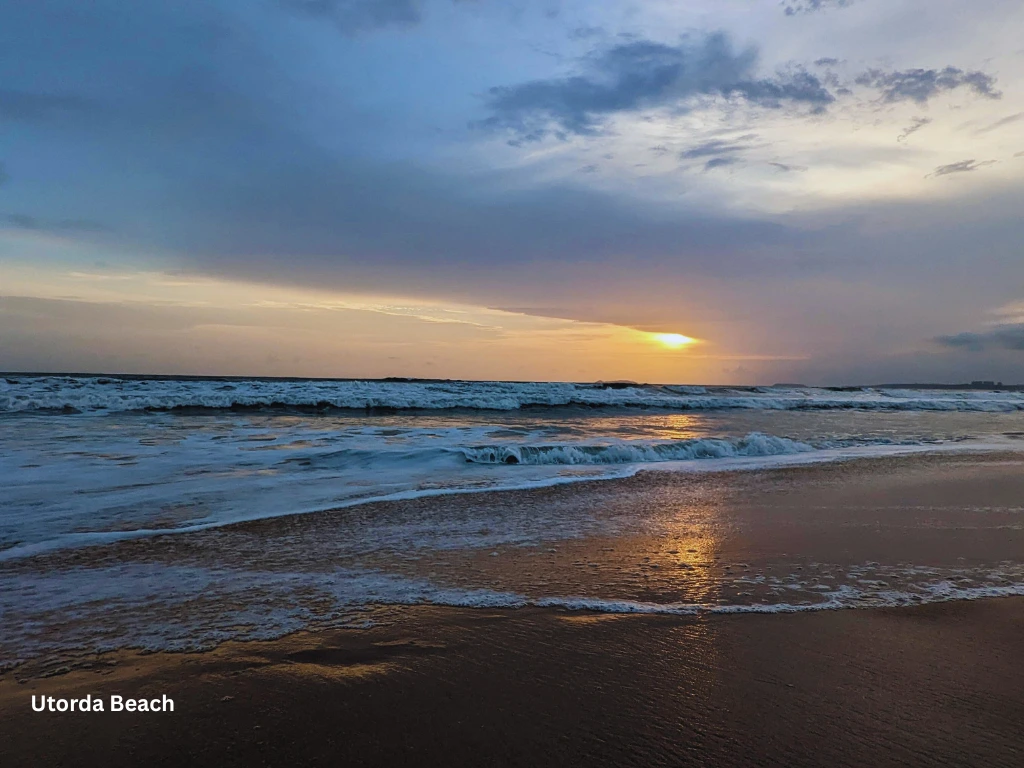
📆 Best Time to Visit
November to March – Enjoy sunny weather, calm seas, and fewer crowds. Monsoon (June–September) brings lush surroundings but trekking and beach access can be slippery.
✅ Travel Tips
- Carry sunscreen, hats, and water
- Wear comfortable shoes for walking along the beach
- Respect local customs and help keep the beaches clean
- Arrive early to secure a peaceful spot and enjoy the sunrise
Fartoda and Uthorda Beaches are perfect for travelers seeking a quieter, authentic Goan experience. Whether it’s a romantic getaway, solo retreat, or family relaxation, these beaches offer serenity, natural beauty, and the charm of Goa off the beaten path.
8. 🍸 All About Alcohol Museum – Candolim
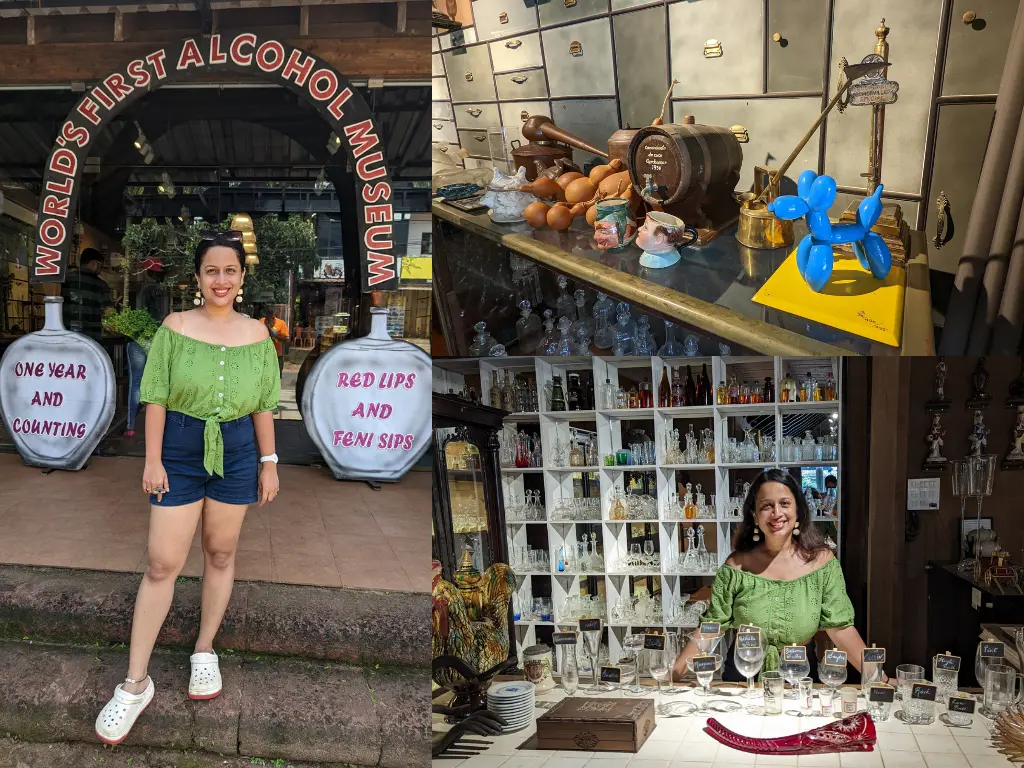
Hidden in the lively town of Candolim, the All About Alcohol Museum is a must-visit for anyone curious about Goa’s drinking traditions. The museum dives into the history of alcohol, focusing on feni, the world-famous Goan spirit made from cashew or coconut.
Inside, you’ll find antique distillation equipment, old bottles, and displays that show how alcohol-making evolved over centuries. The highlight is the feni collection, showcasing family-run methods and traditional recipes still used today. Visitors get to see how this local drink is crafted and learn why it remains such a beloved part of Goan culture.
Even if you’re not a drinker, the museum gives a fascinating glimpse into Goa’s heritage, colonial influences, and quirky stories tied to alcohol in the region.
Location: Candolim, North Goa
Entry Fee: Around ₹300
Timings: 11 AM – 9 PM
9. 🌉 Keri Bridge & Harvalem Waterfalls
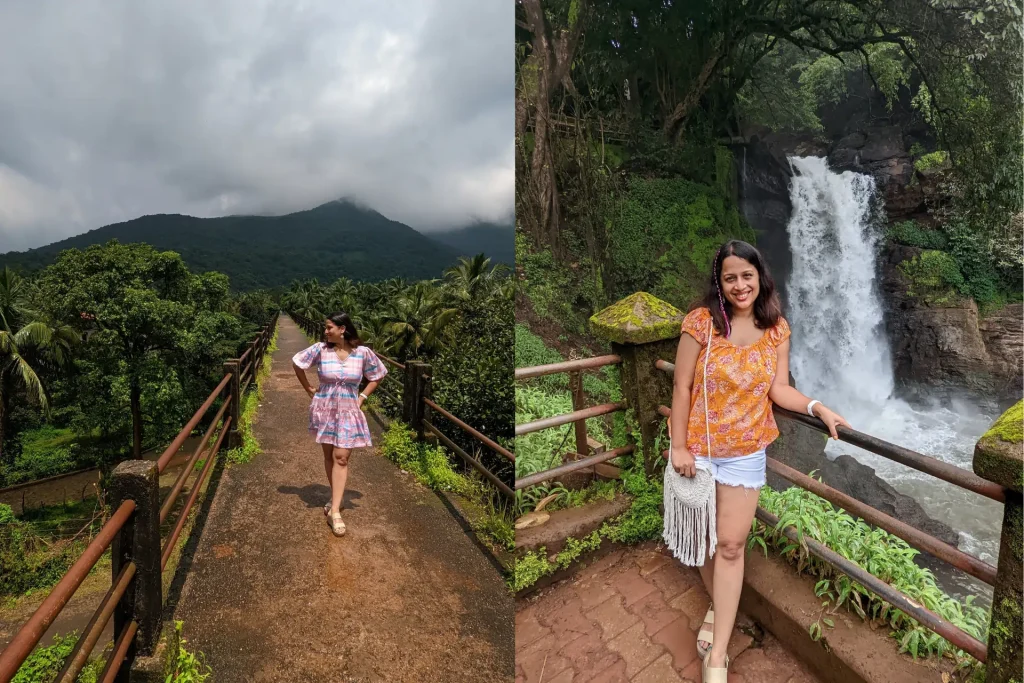
If you’re craving a break from beaches, Keri Bridge offers one of the most scenic riverside drives in Goa. Spanning across the Terakhol River, this bridge is a photographer’s delight, especially at sunrise and sunset when the still water mirrors the lush surroundings. The area is calm, almost meditative, and rarely crowded — perfect for those who like to pause and soak in nature without distraction.
Nearby, the Harvalem (Arvalem) Waterfalls cascade dramatically from a height of about 50 meters, especially during the monsoon when the flow is at its strongest. At the base of the falls, you’ll find a large pool where locals sometimes take a dip. The site is also close to the Rock-cut Caves of Arvalem, believed to date back to the 6th century, adding a layer of history to the natural beauty. Visitors can also explore the nearby Rudreshwar temple and Pandav caves. Read more about Goa in Monsoon here.
Best Time to Visit: Monsoon (June–September) for the waterfall in full force; winter for pleasant walks.
Tip: Carry a raincoat and non-slippery footwear in monsoon. Early mornings are best for photography.
10. 🌴 Mini Parra Road, South Goa
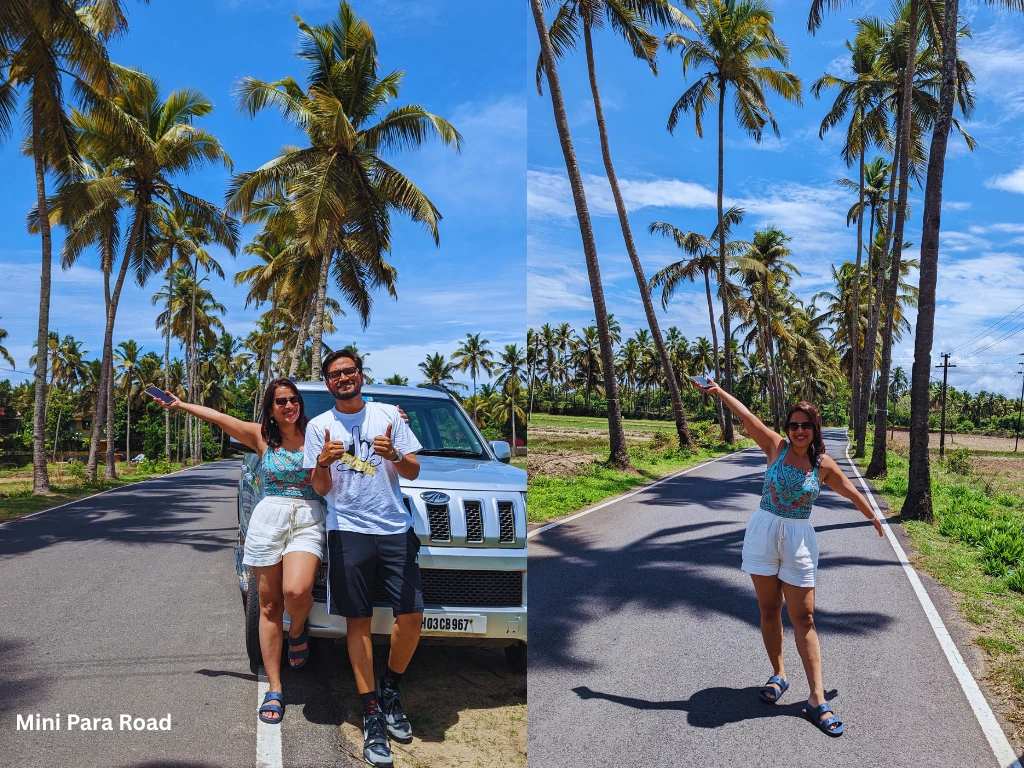
Everyone knows Parra Road, the palm-lined street that became Instagram-famous after appearing in films. But few wander into its quieter cousin — the so-called Mini Parra Road in South Goa. Flanked by towering coconut palms and open fields, this lane is just as charming but blissfully free from crowds.
It’s the kind of road that makes you want to slow down — maybe rent a scooter, stop for photos, and breathe in the salty air as you ride. Unlike the iconic Parra stretch, this one feels untouched, making it a little secret you’ll want to keep to yourself.
Here ia the google map link: https://maps.app.goo.gl/ZfR85RBuwTXvD3QM9
Tip: Visit in the late afternoon for golden-hour light or early morning. Since it’s a small road, be mindful of local traffic and give way to villagers using it daily.
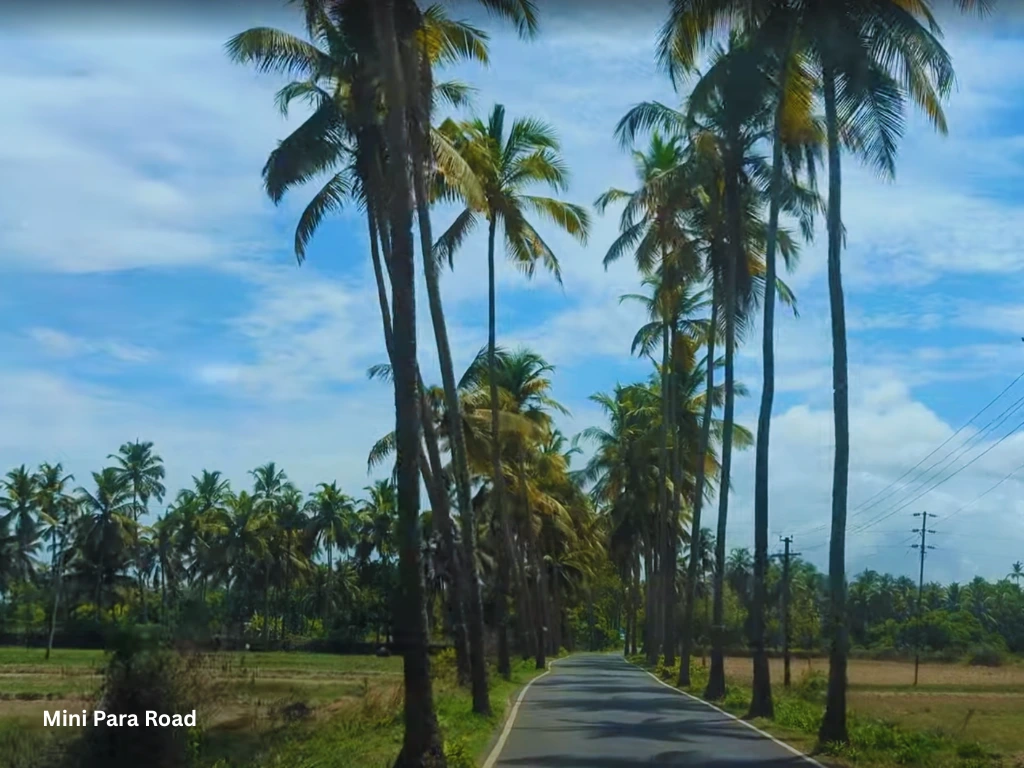
11. 🏠 Houses of Goa Museum – Porvorim
The Houses of Goa Museum is tucked in Porvorim and celebrates the state’s unique architectural and cultural heritage. Goa’s Portuguese and Indian influences come alive through models of traditional houses, furniture, and household artifacts, showing how Goans lived over the centuries.
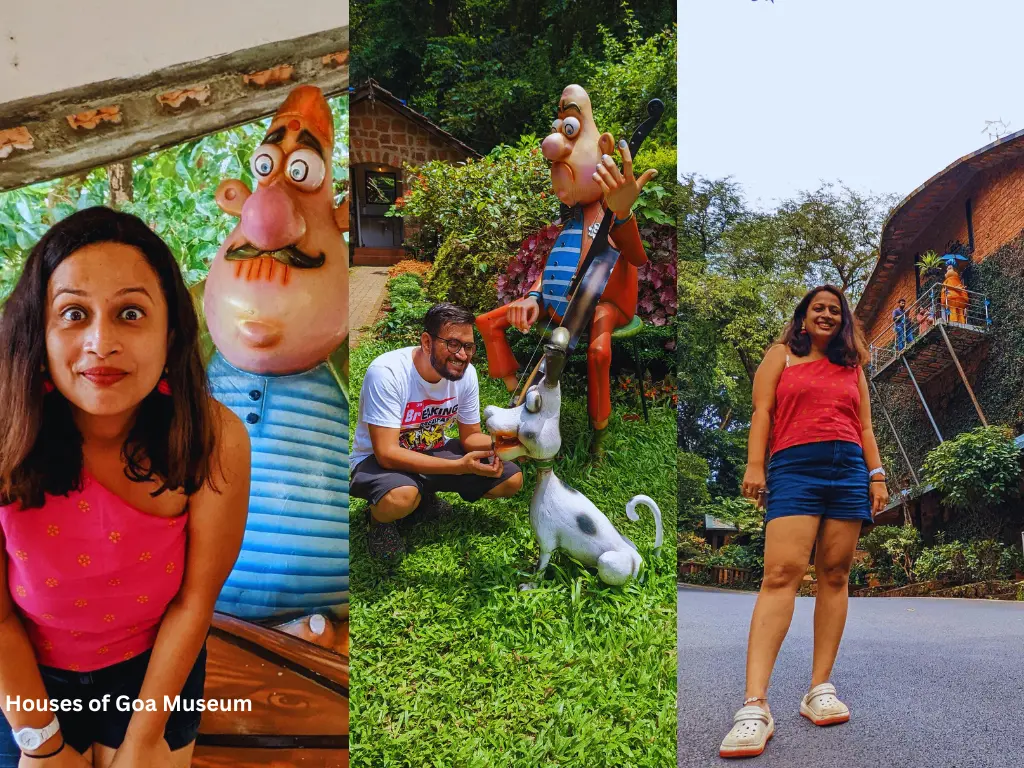
The museum is also home to colorful murals and works by Mario Miranda, the legendary Goan cartoonist. His pieces add a playful and artistic layer, making the museum feel alive rather than just historical. The building itself is designed in a modern style inspired by Goan culture, making it a treat for architecture lovers and photographers.
Exploring the museum, you’ll not only learn about Goa’s architectural history but also the daily life, festivals, and traditions of Goan families, offering a quiet and offbeat experience away from crowded tourist spots.
Location: Torda, Porvorim, North Goa
Entry Fee: Around ₹100
Timings: 10 AM – 6 PM
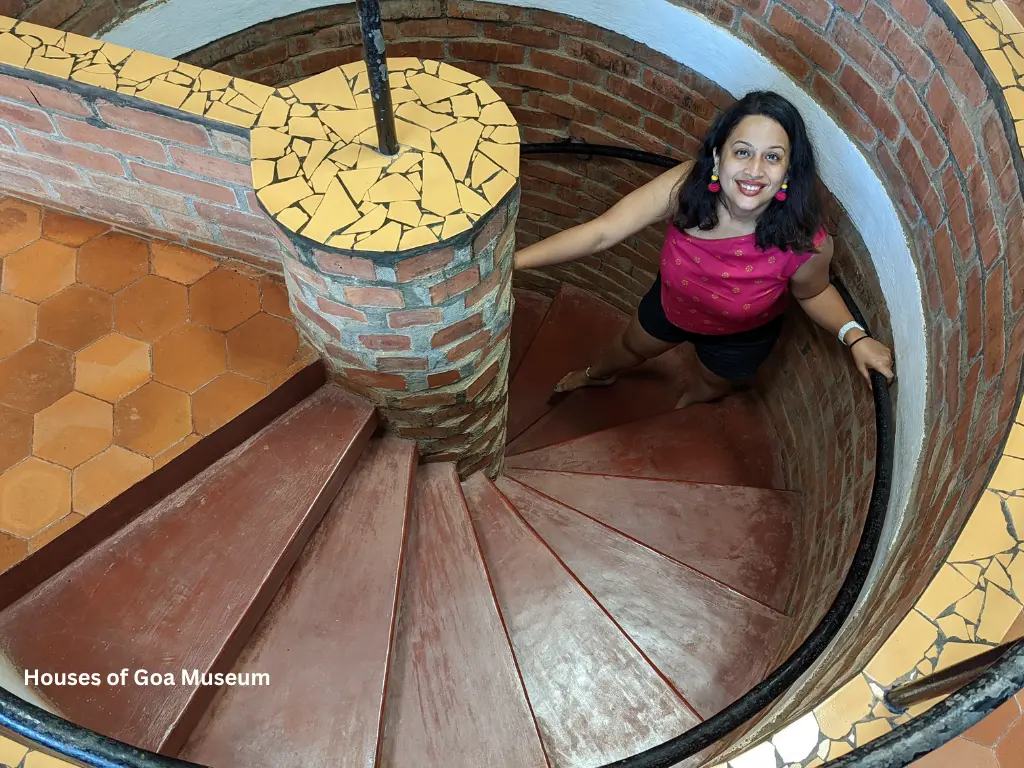
🌍 Practical Tips for Exploring Offbeat Goa
- Best Time to Visit: November to March for pleasant weather; June to September if you love the monsoon magic (waterfalls and greenery at their best).
- Transport: Renting a scooter or car is the easiest way to explore these scattered gems. Ferries connect islands like Chorao and Divar.
- What to Carry: Light cotton clothes, sunscreen, insect repellent (especially for mangroves/treks), and comfortable walking shoes.
- Stay Options: Offbeat Goa has plenty of charming homestays, boutique resorts, and eco-friendly lodges away from the crowded hubs.
- Local Etiquette: Respect the quiet of villages and natural sites. Many places are still community-run — ask before taking photos of people or private spaces.
✨ Offbeat Goa is where the state truly comes alive — in its quiet beaches, hidden trails, family kitchens, and timeless traditions. Step away from the crowd, slow down, and you’ll find a Goa that feels personal, authentic, and unforgettable.
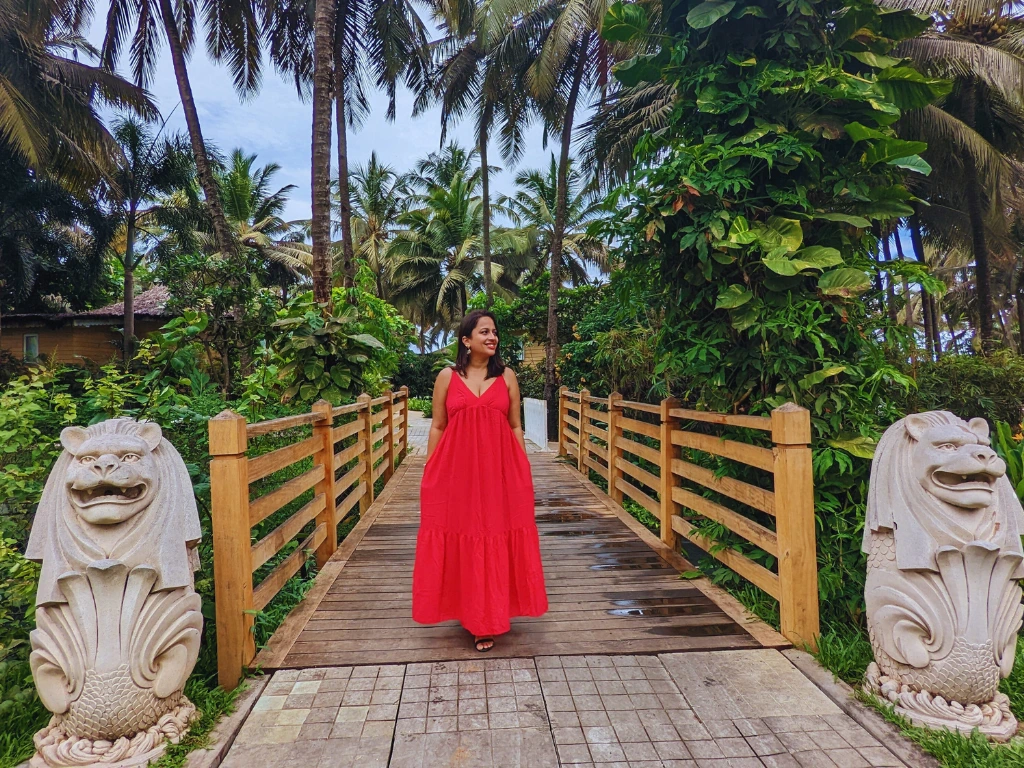
❓FAQs About Offbeat Goa
Q1. Is Goa safe for solo travelers in these offbeat places?
Yes, Goa is generally safe, even in lesser-visited spots. Just stick to well-lit paths at night and inform your host about longer treks.
Q2. Do I need to book in advance for experiences like bread-making or distillery visits?
Not always, but it’s recommended — especially in peak season (Dec–Jan). Local experiences often run with small groups or by prior confirmation.
Q3. How much time should I keep aside for offbeat Goa?
At least 4–5 days if you want to balance beaches and hidden gems. A week is ideal for a slower, immersive trip.
Q4. Are these offbeat spots family-friendly?
Yes! Beaches like Fatrade and Uthorda are quiet and safe. Bird sanctuaries, cultural experiences, and even feni tastings (for adults) can be woven into a family trip.
Q5. What makes offbeat Goa different from the mainstream beaches?
Less noise, fewer crowds, and a deeper connection with Goan culture, food, and nature. You’ll return with stories, not just souvenirs.

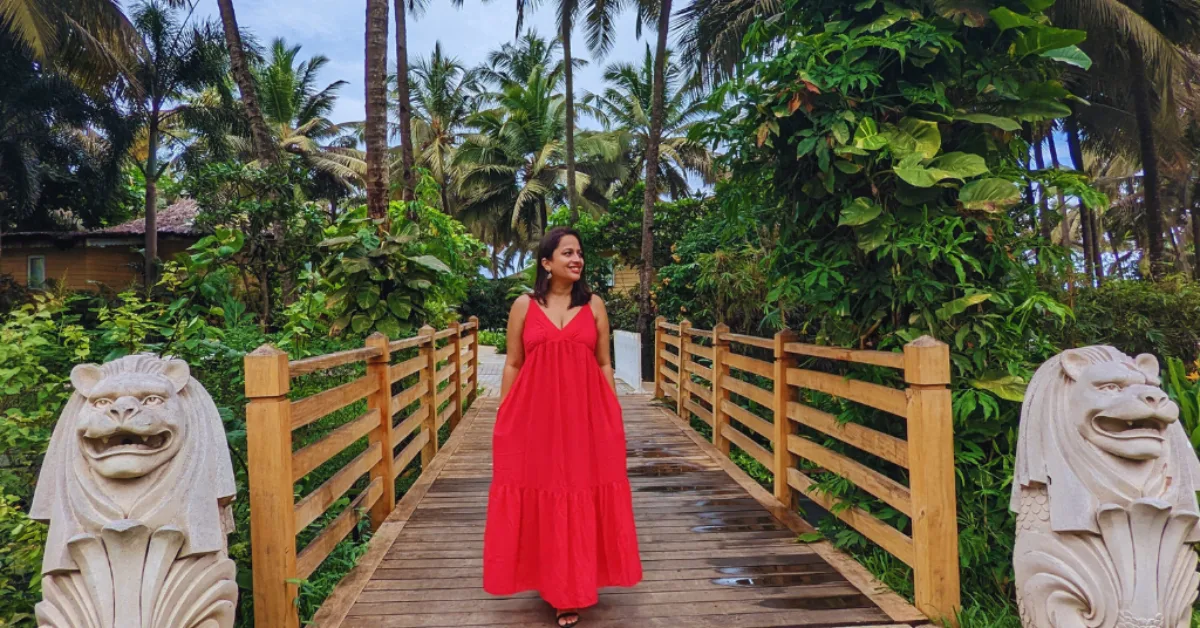
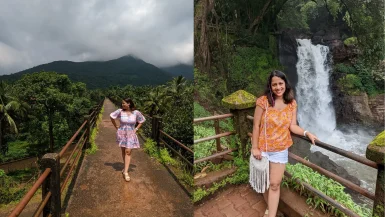
Leave a reply